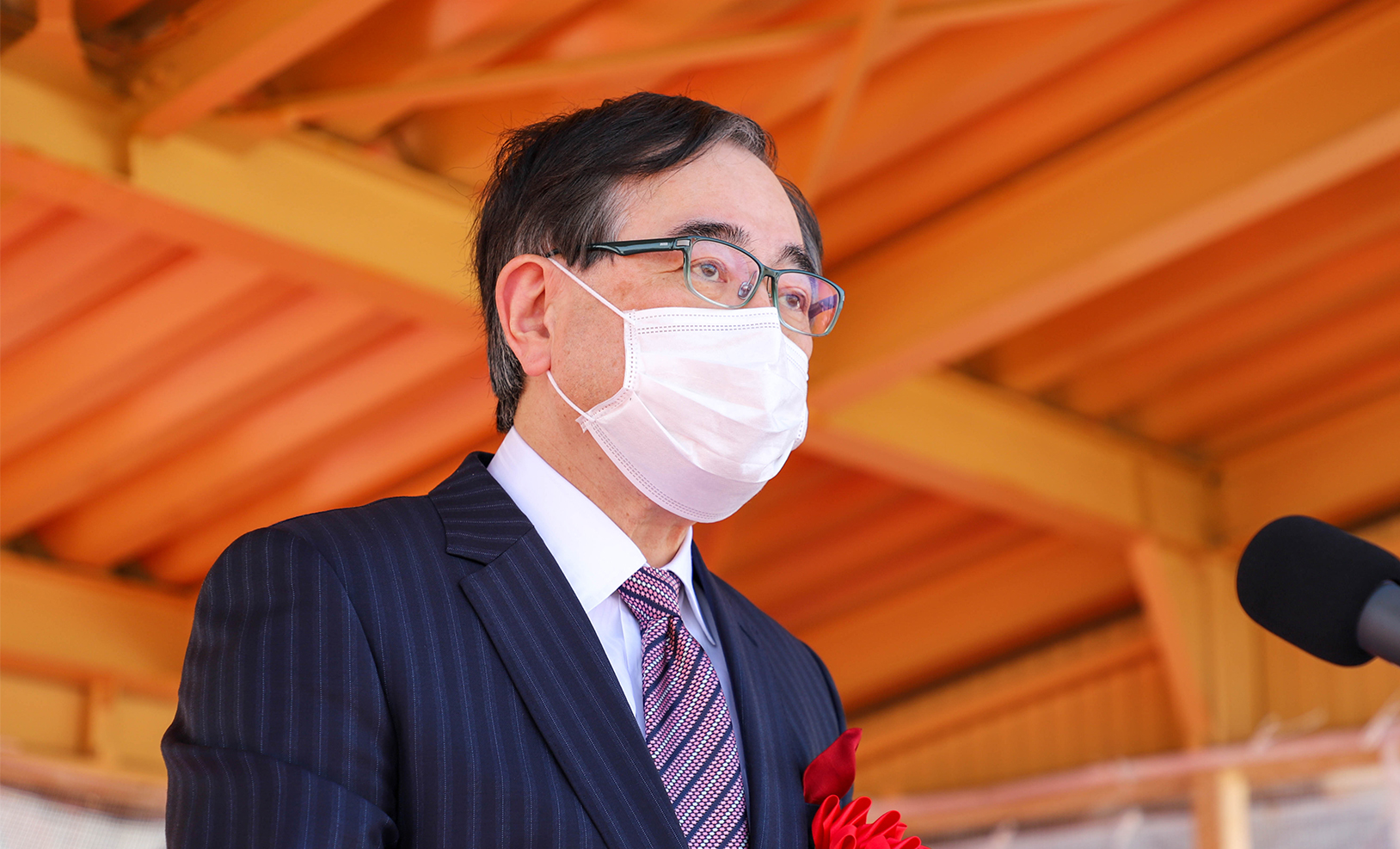Ship Launching Ceremony for Ushio-maru III is held
University News | April 18, 2022
On March 30, 2022, the naming and launching ceremony for the training ship Ushio-maru, of Hokkaido University’s Faculty of Fisheries, was held at Niigata Shipbuilding & Repair, Inc. The training ship (T/S) Ushio-maru is one of the two vessels that Hokkaido University owns and utilizes for research and student training.
The first Ushio-maru was built in 1971 as the mother ship of the Kuroshio II, a submersible research vessel, with a gross tonnage of 97.7 tons and a capacity of 12 persons, and was used for fishery surveys, research, and student training. In 1981, the ship underwent hull extension work to improve accommodation, ensure seaworthiness, and enhance oceanographic instruments, and was enlarged to a gross tonnage of 107.8 tons and a capacity of 16 persons.
The research vessel (R/V) Ushio-maru II was built in 1992 as a full-scale fisheries research vessel, with a gross tonnage of 128 tons and a capacity of 19 persons. In 2002, following the scrapping of the T/S Hokusei Maru, the ship underwent hull extension work and was enlarged to 39.39 meters in length, a gross tonnage of 179 tons, and a capacity of 33 persons, and its name was changed from R/V to T/S, where it has been in service to this day.

Ushio-maru I (left) and Ushio-maru II (right) Photo provided by the School of Fisheries Sciences, Hokkaido University
T/S Ushio-maru III, currently under construction, is a replacement for the aging T/S Ushio-maru II. Although her capacity will remain unchanged at 33 persons, it will be 45.3 meters long, with a gross tonnage of ca. 262 tons, and will be equipped with the latest survey equipment and a comfortable living environment.
At the ceremony, the ship was named “Ushio-maru” by the President of Hokkaido University, followed by a ritual and a boarding tour.
Professor Tetsuya Takatsu of the Faculty of Fisheries Sciences, who participated in the ceremony, said, “I am delighted. The ship is bigger, more stable, and a little faster, which will allow us to conduct research more efficiently. I have been researching population fluctuations of demersal fishes around Hokkaido, and since the mechanism of fluctuation differs for each species, there are still numerous scientific questions left to be addressed. My generation cannot do it alone, but I would like to work with my students to develop technologies that will lead to increased production of fishery resources,” he said.

From the left: Prof. Tetsuya Takatsu, Prof. Nobuo Kimura, Prof. Tohru Mukai, Faculty of Fisheries Sciences
Professor Tohru Mukai, chair of the training ship steering committee, said, “I am overwhelmed. I am so glad to witness this once-in-3-decades shipbuilding project. I specialize in underwater acoustics, and I am proud that T/S Ushio-maru III is a low-noise vessel that complies with international standards, even though it is a small vessel. The latest research equipment and the comfortable living environment are also important features of the new Ushio-maru. I believe that she can contribute to achieving the SDGs such as ‘Life below water’ and ‘Zero hunger,’ and I hope to nurture students who can contribute to society, especially in these aspects.”
Professor Nobuo Kimura, then Dean of the School, Graduate School and Faculty of Fisheries Sciences, said, “While the ocean environment is changing rapidly due to global warming, T/S Ushio-maru III will be able to survey a wider area of ocean with its increased speed. It is important for us to contribute to establishing sustainable fishery resources through research and education. With two training ships, the Oshoro-maru and the Ushio-maru, we are able to provide a wide range of services, from large-scale practical training to research surveys, and from coastal cruises to oceanic voyages. We can conduct research on oceanic changes, the marine environment, and even global environmental issues involving the ocean. If you are interested in these topics, we encourage you to join the School of Fisheries Sciences.”
T/S Ushio-maru III will be completed in the summer after loading more equipment and interior finishings, and will then be moved to Hakodate, where the Faculty of Fisheries Sciences is located.
Written by Naoki Namba



